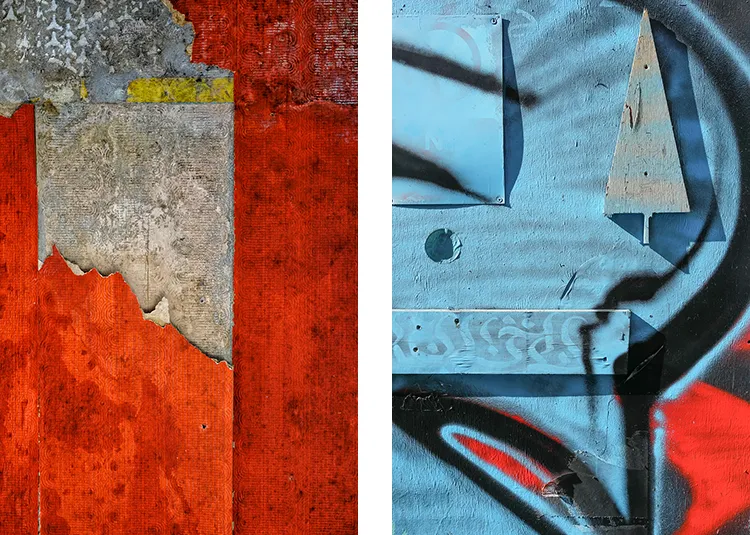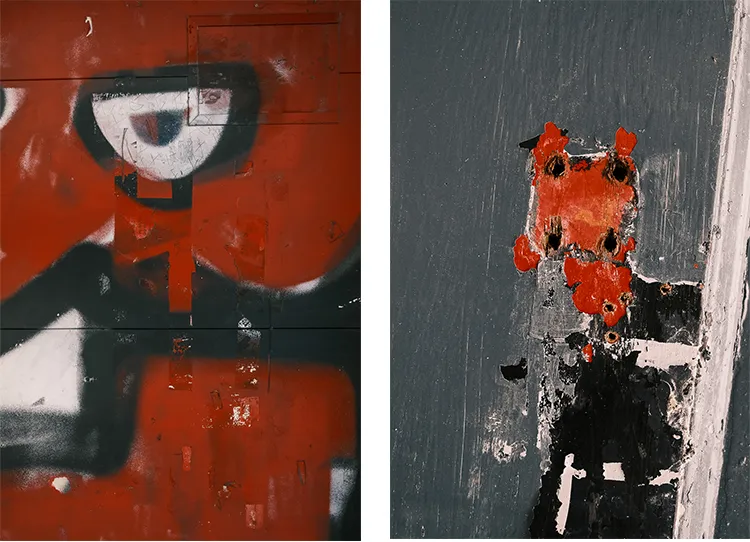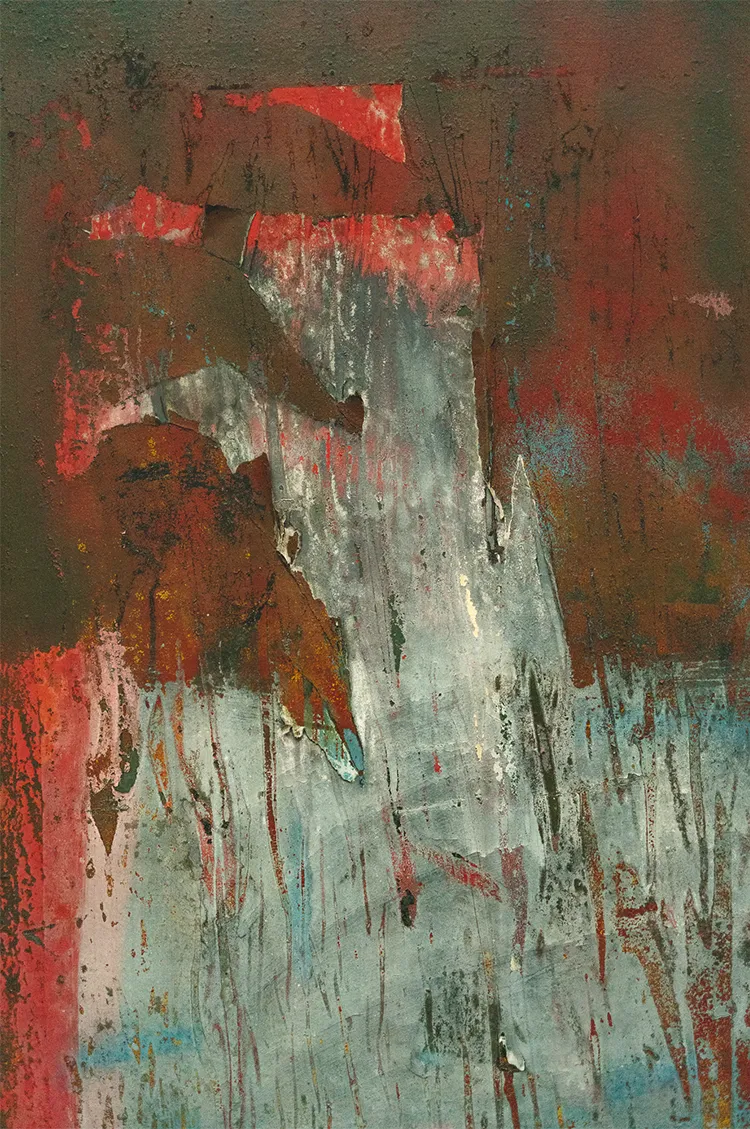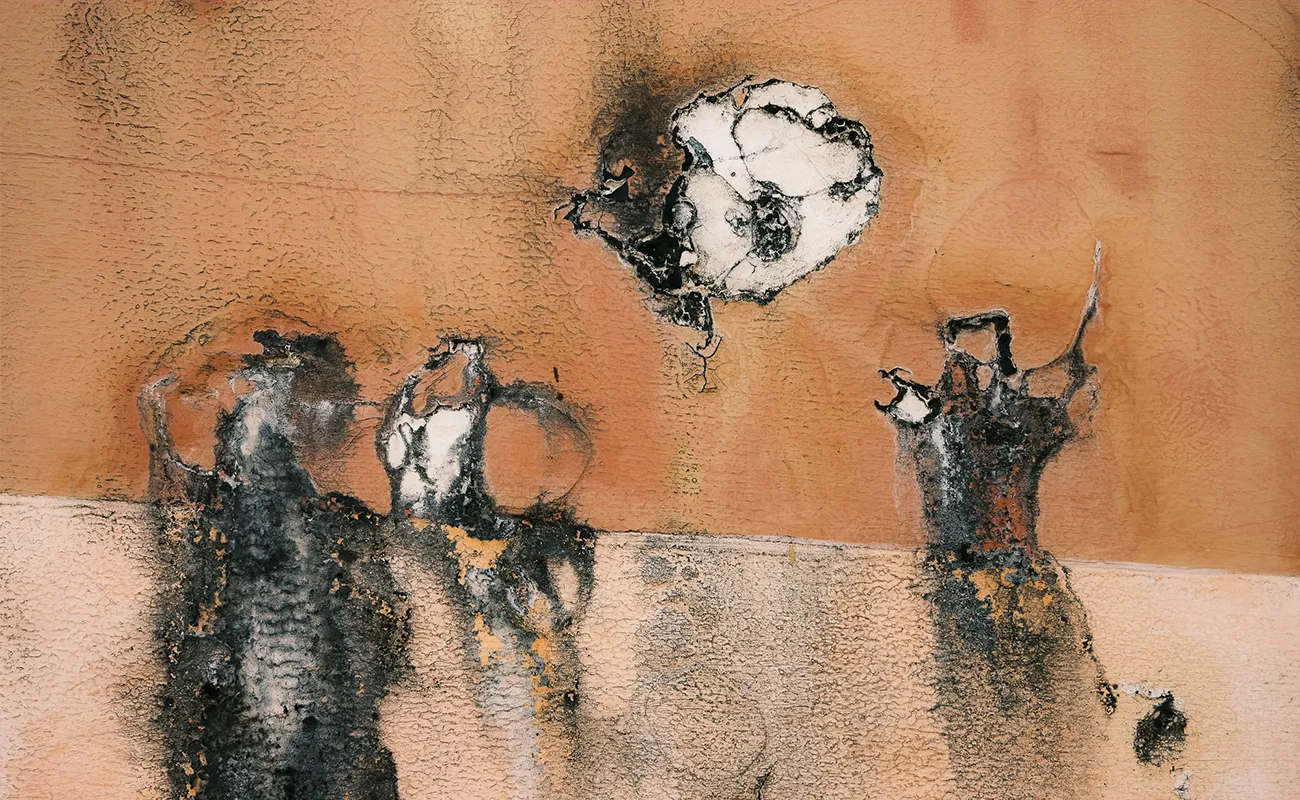“My abstract photography emerges from a rebellion against these uniformizing tendencies… the trajectory of each of our lives is simply singular.”
From Philosophy to Photography: Bridging Two Worlds
Piotr Nalewajka’s journey from philosopher to photographer is a rich narrative of intellectual exploration and visual expression. Born in 1975 in Poland, Nalewajka credits his homeland with providing a unique perspective on the human condition. For him, Poland’s complex history and culture serve as an unparalleled lens for examining the depths of human nature. His childhood, steeped in books, fueled a deep interest in philosophy, leading him to pursue a PhD in the field. However, a career in academia was not the only path Nalewajka would follow. Instead, life took an unexpected turn when he relocated to Ireland and opened a construction business, a radical shift that introduced him to the practicalities of daily existence.
Yet Nalewajka’s intellectual curiosity remained, and it found a new outlet in photography. He immersed himself in the medium, completing a two-year photography course with honors. Photography offered Nalewajka a fresh way to explore and communicate philosophical ideas. Today, as a professional member of Visual Artists Ireland, his work crosses boundaries between the abstract and the documentary, often incorporating both text and images in his compositions. This approach is a response to a question posed by philosopher Hans-Georg Gadamer: “Are the poets falling silent?” Nalewajka’s answer is visual, capturing the complexity of life through his ongoing project, Sovereign Path of the Eye.

Piotr Nalewajka: A Rebellion Against Uniformity
In a world increasingly shaped by technology and global economies, Nalewajka’s abstract photography arises as an act of rebellion against homogenization. Inspired by the existentialist philosophy of Martin Heidegger, Nalewajka seeks to resist the “inauthentic ways of being-a-Self” that dominate modern life. He believes that each life’s trajectory is inherently singular, and his art reflects this conviction. His abstract images aim to capture personal associations and local elements, highlighting the uniqueness of individual experience in a world that often pressures people to conform.
However, Nalewajka’s abstract art is not a celebration of unchecked subjectivity. He carefully navigates between personal interpretation and broader cultural references. His work remains rooted in objective realities, whether they be historical, cultural, or existential. One early exhibition, featured during Culture Night in Limerick, Ireland, showcased Nalewajka’s ambitious attempt to visually interpret iconic literary texts by authors like James Joyce and Oscar Wilde. While he acknowledges the challenge of translating literature into visual art, the endeavor exemplifies his belief that subjective vision can still engage with the universal.
By blending philosophical inquiry with abstract imagery, Nalewajka challenges viewers to reconsider the act of seeing itself. In a world where so much has already been documented, he argues that the process of interpreting what we see remains deeply mysterious. His photography does not merely document; it invites contemplation and personal reflection, rejecting prepackaged meanings in favor of endless possibilities.

The Alchemy of Urban Spaces
Nalewajka’s artistic style is both unconventional and transformative. Primarily working in urban environments, he captures fragments of walls, shapes, and textures, transforming everyday objects into striking visual compositions. He likens this process to alchemy—a turning of the mundane into something extraordinary. For Nalewajka, the advantage of abstract photography lies in its ability to transcend the familiar, creating a world where recognizable objects dissolve, allowing the interplay of color, texture, and form to take center stage.
This alchemical approach rejects the traditional function of photography as a means of representation or documentation. Nalewajka contends that, in an age where nearly everything has been photographed, the time has come to move beyond mere replication of the external world. Instead, his images emphasize the act of seeing as a dynamic and subjective process. While his themes—love, death, beauty, and humor—are universal, Nalewajka’s method of depicting them is highly individualistic. He references Roland Barthes’ idea of mathesis singularis to explain his approach, which focuses on personal interpretation and resists the rigidity of conventional representation.
Nalewajka’s artistic philosophy encourages viewers to embrace the mystery of existence and the never-ending process of interpretation. His images, often composed of visual “blotches,” defy simple explanations, reflecting his belief that ultimate truths remain hidden from us, with death being the sole exception. His work thus invites an ongoing dialogue with the viewer, one that resists easy answers and insists on the importance of personal vision.

Piotr Nalewajka: Photography as Resistance
At the heart of Nalewajka’s creative practice is a resistance to what he sees as the dangers of modern photography. He deliberately distances himself from the technical perfection that has come to dominate contemporary photography. While advances in technology have made it easier to produce highly detailed images, Nalewajka argues that such precision often narrows the field of interpretation, reducing the complexity of visual experience. He draws a comparison to a fable about a centipede that loses its ability to dance after overanalyzing its movements. For Nalewajka, the camera is merely a tool, one that should be used cautiously and never allowed to dictate the photographer’s vision.
This resistance extends to Nalewajka’s critique of amateur photography clubs, which he describes, citing Vilém Flusser, as “post-industrial opium dens” where members become intoxicated by the technical complexities of their cameras. Instead of becoming a function of the machine, Nalewajka advocates for an open, exploratory approach to photography—one that embraces chaos and resists the rigid order imposed by technology and social expectations. His work reflects an ongoing struggle against entropy, both in art and in life, as he strives to distinguish what is truly important.
Nalewajka’s influences are varied, but he finds his greatest inspiration not in other photographers but in literature, philosophy, and everyday life. His primary project, Sovereign Path of the Eye, exemplifies this intersection of word and image, drawing on philosophical concepts from thinkers like Immanuel Kant and Leszek Kołakowski. In this project, Nalewajka explores the idea that visibility without concepts is blind, while concepts without visibility are empty. His photography thus becomes a means of exploring the world through the prism of who we are, encouraging viewers to do the same.
Through his work, Nalewajka resists the standardization of human experience. His photography, both abstract and deeply personal, offers a form of visual resistance against the uniformity of modern life, celebrating the singularity of each individual’s journey.






